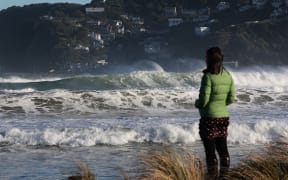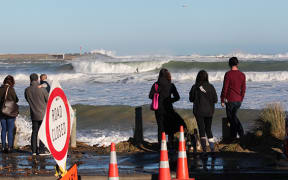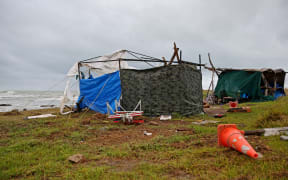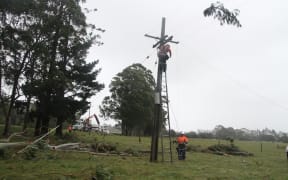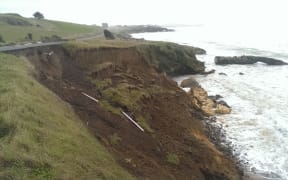People may need to abandon coastal properties within a generation because of extreme weather events, a Victoria University climate change scientist says.
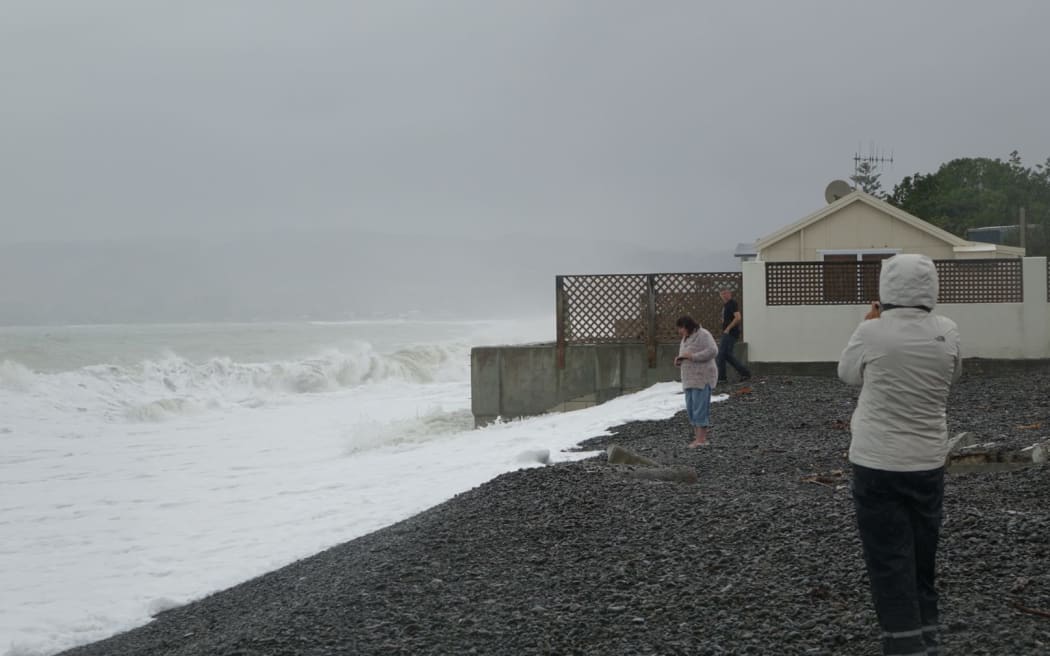
Locals say during a bad storm the waves go over the top of this house in Haumoana Photo: RNZ / Peter Fowler
Damaging waves, such as those which battered Wellington's south coast on Sunday, are predicted to occur more often as sea levels continue to rise.
Victoria University professor of physical geography James Renwick said people living near the beach could have to move in 30 years' time as land was taken over by the sea.
A 30-40cm sea level rise in that time would make some areas vulnerable to inundation when there was a big tide and a storm.
Prof Renwick said even if greenhouse gas emissions were stopped tomorrow, the sea would still rise 1-2m in the next 200 years, making coastal erosion caused by climate change the most pressing issue facing the country.
"We're a long, narrow country with a lot of coast and a lot of people live near the coast ... and if one thing is for sure, it's that sea levels are rising.
"It does pose a very serious problem."
Reversing the effect of climate change was almost possible but the sooner carbon emissions were reduced, the less the sea levels would rise, he said.
Dr Renwick said managed retreat from coastal areas was an emotive topic but one that could not be avoided.
"Over time we do have to look at moving back from the present coastline because the coastline is going to move inland - that's the reality."
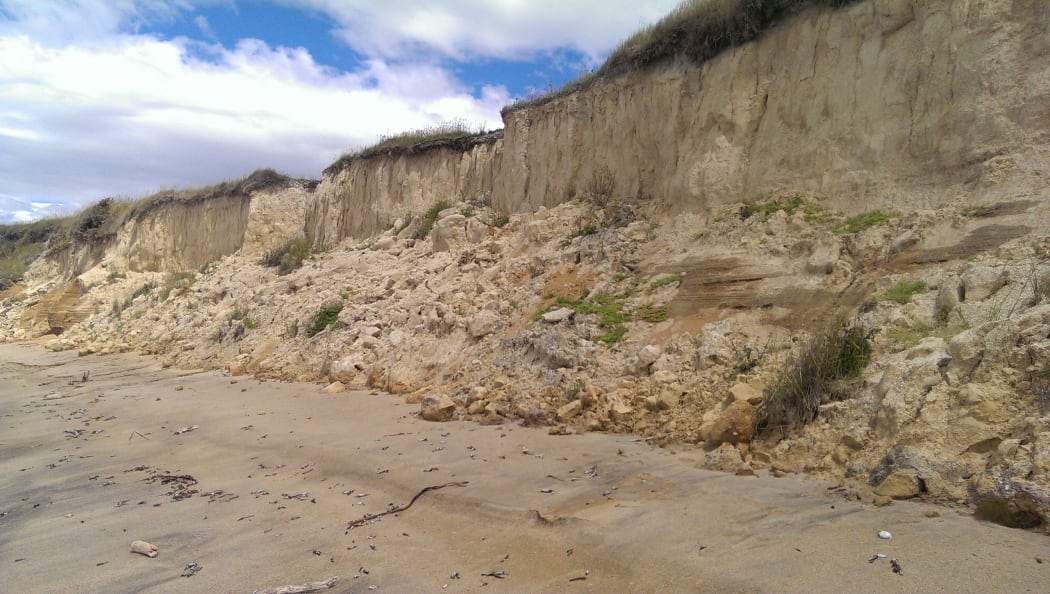
Ocean erosion threatens the coastal route in Otago. Photo: RNZ
MetService meteorologist Georgina Griffiths said extreme weather events were a combination of rising sea levels and daily weather patterns such as a high tide or strong onshore wind.
She said the forecast El Nino meant Wellington would probably experience more damaging storms over winter and spring.
The Kaikoura coast, Gisborne and Hawke's Bay and parts of Auckland were also "very vulnerable" to high tides and a "stormy onshore event".
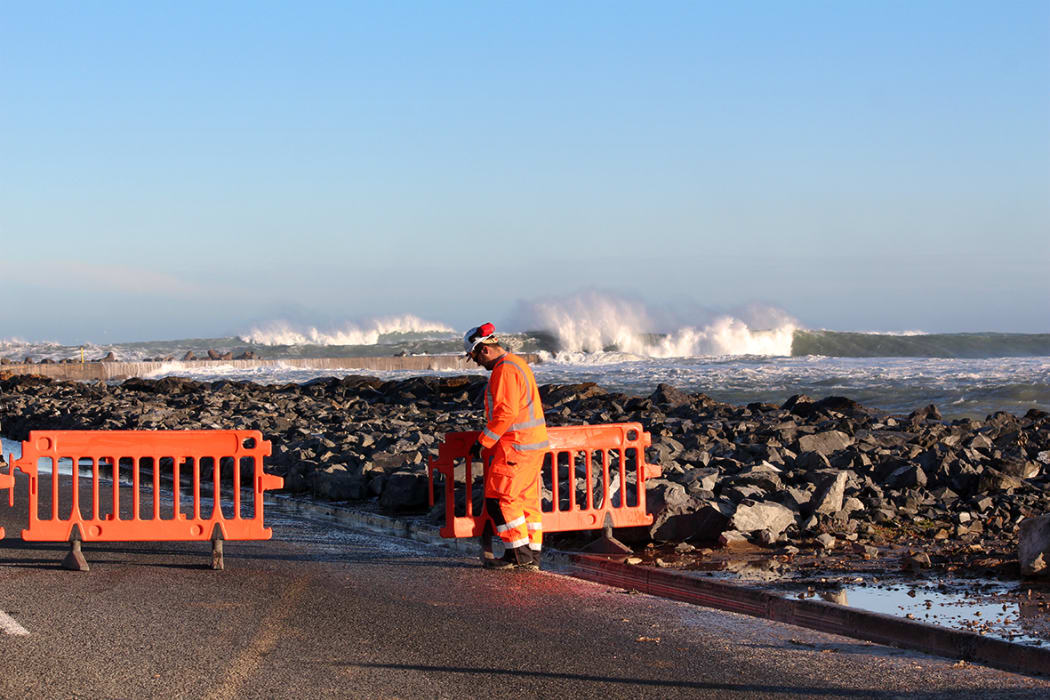
A road closed at Lyall Bay on the weekend due to storm surges. Photo: Stephen Lynch
Wellington city councillor David Lee said people seemed to believe climate change was something to deal with in 50 or 100 years but its effects were already being experienced.
Mr Lee said protecting coastal areas or lifting at-risk properties were options, but ultimately the discussion about managed retreat from some land needed to be had.
"[It's] quite a big call because it means almost abandoning certain areas and saying these areas are not suitable to development ... and maybe there is no ability to actually protect."
NIWA scientist Richard Gorman studies wave patterns and said rising sea levels were undoubtedly causing more damaging waves.
He said New Zealand needed to think about climate change on a global scale because the country was often affected by storms in other parts of the world.
Earlier this month, Local Government New Zealand announced it was looking at establishing a risk management agency.
Councils around the country, including Wellington, Auckland and Christchurch, are incorporating natural hazard protection into their long-term planning.
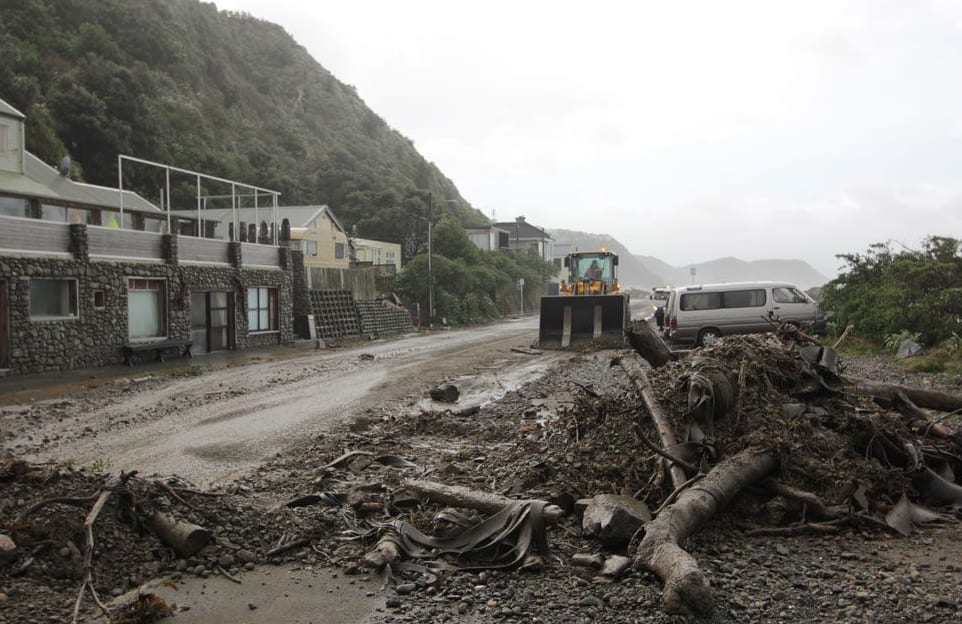
Cleaning up road damage on Wellington's southern coast in 2013. Photo: Simon Baumfield
